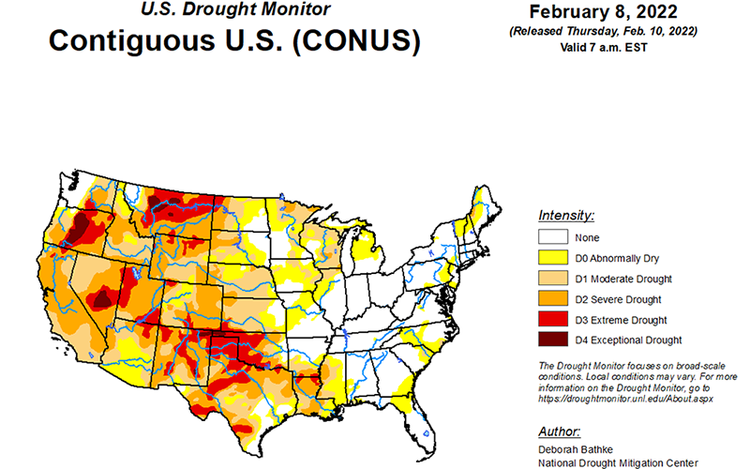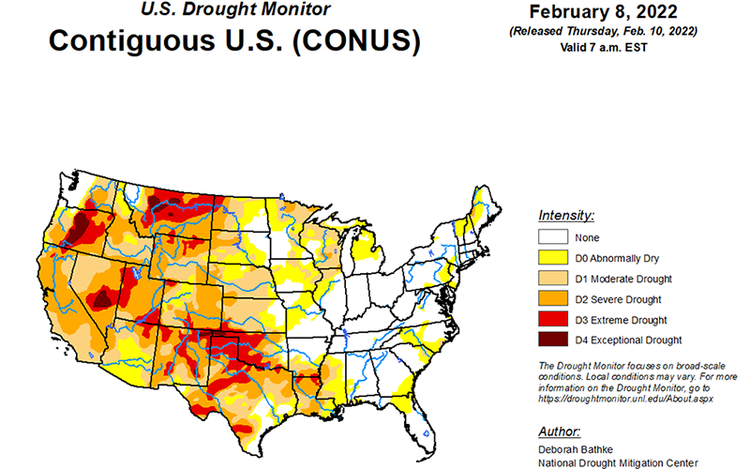By Alexia Stanbridge | –
( Cronkite News ) – WASHINGTON – The megadrought that’s gripped Arizona and the Southwest since 2000 is the driest in more than 1,200 years, and it is likely to continue for the near future, according to a new report.
Those findings, published Monday in the journal Nature Climate Change, are based on tree-ring records going back to the year 800. The report by researchers at UCLA and Columbia University also attributed at least some of the current drought’s severity to human activity.
Experts in Arizona said the report does not come as a surprise and that the state has been preparing for such a drought for years – and will likely face similar challenges for years to come.
“There’s already been a huge amount of work, you know, to try to be prepared for a hotter, drier future,” said Sarah Porter, director of the Kyl Center for Water Policy at the Morrison Institute.
“That’s really what water management is all about in the Southwest, and has been all about for, you know, a couple of decades,” she said.
The report comes as historic low levels at Lake Mead and Lake Powell have triggered the state’s drought contingency plan, under which some tribes and agricultural users will begin to see reductions on water availability, which will spread to other users if the drought continues.
Related story
With less water on the surface, how long can Arizona rely on what’s underground?
It also comes as Gov. Doug Ducey has proposed investing $1 billion in water infrastructure, including funding for a desalination plant.
The report looked at soil moisture and said that “exceptionally dry soil in 2021 was critical for the current drought to escalate and overtake the 1500s megadrought,” which was previously considered the most severe in southwestern North America.
The current drought’s new status as the worst in 1,200 years came despite relatively high rainfall in the summer of 2021. That rainfall is reflected in U.S. Drought Monitor maps, which showed 85% of Arizona in an “extreme drought” last February, compared to just 5% this month, when just over 43% of the state was considered “abnormally dry.”
But experts said those maps can be misleading when it comes to ongoing drought conditions.
“It’s a bit of a disconnect there about water supply, because we don’t rely on rainfall every day to be our water supply,” said Tom Buschatzke, director of the Arizona Department of Water Resources. “We rely on reservoirs, like Lake Mead, to collect water over a year or over a number of years.”
Arizona State Climatologist Erinanne Saffell, who is also a co-chair for the Arizona Drought Monitoring Technical Committee, said a less-extreme drought monitor map does not mean Arizona is out of the drought.
More than 55% of the U.S. was in a state of “moderate drought” or worse in early February, with 11% considered in extreme drought, federal agencies reported. (Map courtesy U.S. Drought Monitor).
More than 55% of the U.S. was in a state of “moderate drought” or worse in early February, with 11% considered in extreme drought, federal agencies reported. (Map courtesy U.S. Drought Monitor)
“Really, what you’re seeing is that the distinction from last year to this year is more of a short-term type of drought being represented and showing you that change,” Saffell said.
She said it is not easy to get out of a drought, which is a long-term process. The drier a drought is, the more “wet years” will be needed to get out of it.
“We would need to have, you know, several wet years together, in order to take us out of the drought, and that’s because of the nature of that long-term aspect of drought,” Saffell said.
The report said that the current drought is likely to stick around: Its modeling said there is a 94% chance that the 22-year drought continues through a 23rd year, and a 75% chance it stretches to 30 years. The percentages drop if human impact on the climate is not included, but the report said that human-induced drying in the region “is likely to intensify, making these calculations conservative.”
“We’ve had these extended megadroughts … not in living memory, but in the tree-ring record, we know that there have been megadroughts for as long as 30 years,” Porter said. “I wouldn’t be surprised for it to go on that long.”
Related story
Tribal official calls on Congress to fund critical water infrastructure
Saffell said that recovering from the drought is complicated by the fact that the region is not just seeing less precipitation, but “a change in temperature. And that affects the type of precipitation we’re getting.”
“When we look at wanting to recharge our aquifers and to replenish our water supply, we need winter precipitation to do that,” Saffell said. “That means we are looking for snow. So if we get less snow, then that means we’re getting less water in our water supply.”
All the experts agreed that there may well be wet years during the drought, but that the long-term impacts will continue. In the meantime, state officials said they will keep current drought-response plans in place and keep planning for a drier future.
“We’ve been trying to get ahead of that curve and protect our water supplies from going to more draconian levels of shortages,” Buschatzke said. “It is definitely important for people to know that we are still in a drought.”
He said Arizonans should realize that what the state is experiencing “might be a drought, but also might just be our future is going to be drier and hotter because of climate change.”
“So we are planning for all of that, both the short-term drought, and that we’re probably going to get less water on more of a permanent basis,” he said.
Alexia Stanbridge expects to graduate in May 2022 with a bachelor’s degree in journalism and mass communications, and intends to pursue a master’s degree next year. Stanbridge, who has interned with and worked for Arizona Horizon and Break It Down on Arizona PBS, is working for the D.C. bureau.
Via Cronkite News




 © 2025 All Rights Reserved
© 2025 All Rights Reserved